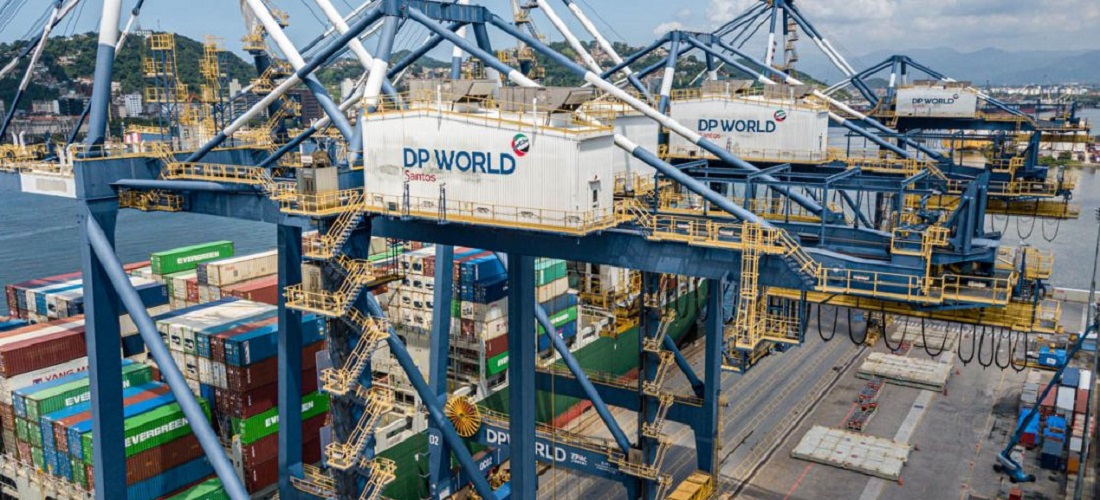
President of DP World Santos believes that year will be of strategic importance for the port economy
Jan, 24, 2022 Posted by Gabriel MalheirosWeek 202204
Fábio Siccherino, director-president of DP World Santos, believes that 2022 will be a year of strategic importance for ports, in addition to maintaining alive the expectation of setting another cargo handling record at the Port of Santos.
According to him, the company continues looking into new investments, with the objective of diversifying its operations and increasing the container handling capacity. The executive also highlights the opportunity to consolidate the Port of Santos as a hub port on the east coast of South America and improve rail, waterway, and road access to the Santos pier. Check out more in the interview below.
What are the expectations for cargo handling in 2022? Is the estimated volume greater or less than that in 2021? How much?
In general, we expect 2022 to be better than 2021, which already had presented better figures than 2020. We are still closing out last year’s consolidated figures, but DP World Santos reported a 17% increase in containerized cargo operations in the first half of 2021 compared to the same period in 2020, with slightly more than 450 thousand TEU handled. The positive number also reflects the sector’s recovery after being severely impacted by the covid-19 pandemic in 2020.
And what are the actions that can ensure that operations will be more efficient at the Port of Santos?
There are some actions that can ensure greater efficiency in the Port of Santos’ operations. The first option is to raise the draft in the access channel. The Brazilian Navy approved the Port of Santos receiving ships measuring 366 meters in 2021. However, in order for this to be appealing to shipowners, the channel must be dredged, ensuring greater draft and allowing greater use of the capacity of these larger ships.
The establishment of an environment that allows and encourages new investments to be directed at the Port will also be fundamental so we can maintain our operations up to speed in terms of innovations and new technologies. Legal certainty and regulatory stability are critical in this regard.
Promoting efficient and competitive connections between the hinterland and the Port is one of the main challenges for international logistics. As a result, improvements in rail, waterways, and road access are critical. The private sector is currently investing heavily in infrastructure in Brazil, but we still have a long way to go to recover our infrastructure capital stock. Furthermore, because ports are located in the maneuvering spaces of a global “board,” they must be attentive to what is most modern and efficient in serving these large vessels, both in terms of infrastructure automation and technology.
We’ve been saying for a while that the Port of Santos, as the main port in Latin America, has a great potential to becoming a Hub Port on South America’s east coast, that is, a port that concentrates various routes from which cargoes could be distributed along the coast via feeder services.
Based on this consolidation, larger ships could be assigned to longer routes, while smaller ships could be assigned to cabotage routes. More investments in the rail mode are also required in order to improve and expand cargo reception at the Port of Santos. Currently, around 30% of loads arrive at Santos by rail. However, demand is so sensitive that DP World Santos will inaugurate, in 2020, as part of the country’s largest and most modern pulp complex, a modern railway loop that minimizes the need for maneuvers and does not require disengaging the wagons to unload.
This will allow the entire cargo volume to be transferred directly by rail from its production units in Jacareí and Três Lagoas to the terminal. However, only 3% of containers arriving or leaving the Port of Santos are transported by rail. There is a lot of room for growth there, in our opinion.
The possibility of the privatization of the Santos Port Authority (SPA) indicates that 2022 be a year of intense transformations. What are the expectations for this process?
At first, we welcome the privatization of the SPA. However, more in-depth discussions about the privatization model to be chosen are required. Discussions should center on the anticipated benefits, particularly for shippers, as well as how the issue of legal certainty will be addressed, not to mention the regulatory risks that put existing contracts in peril and which new rules will come into force.
The model must also ensure that the Port of Santos retains its dominant position in Brazilian international trade. This is an initiative that, if carried out correctly, will provide numerous benefits to the sector, including faster investments in waterway access infrastructure, which will allow the operation of increasingly larger ships, increased port reliability, and increased competitiveness for Brazilian foreign trade.
Source: A Tribuna
To read the full original article please visit the link:
-
Ports and Terminals
Feb, 14, 2019
0
CDRJ invests to improve port security
-
Grains
Oct, 11, 2022
0
EU soybean imports reach 3.12mt; Brazil is the main supplier
-
Trade Regulations
Jun, 25, 2019
0
Brazil may ask WTO to consider new rules for agricultural subsidies
-
Ports and Terminals
Feb, 09, 2023
0
Antaq publishes panel with country’s port administration information

